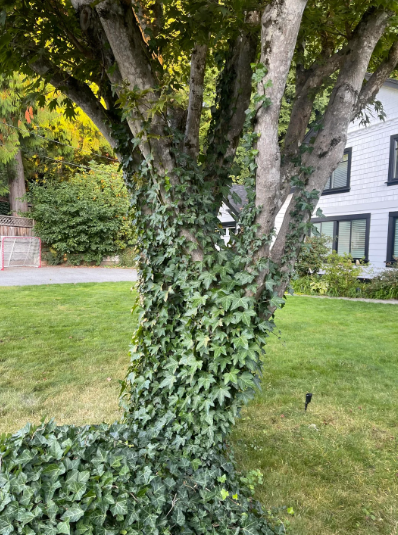Many invasive plants look beautiful, fooling gardeners into allowing their presence before they are out of control — and by then, it's too late. Fortunately for one homeowner, a question about invasive ivy caught the would-be tree killer in its tracks.
The homeowner posted a photo of a tree, whose lower trunk was covered in ivy, on Reddit. "Should I stop this?" they asked. "I love the look of the vines growing up the tree but will it hurt my tree?"

"My neighbor's dead ivy-covered trees say to remove it," one person said dryly.
Another commenter had a similar story. "I had a beautiful mulberry tree which the previous home owners planted an ivy at the base," they wrote. "Eventually the ivy killed it. … I wish I had known to remove the ivy."
Another advised, "Remove that or it will kill your tree."
Ivy is among the most common invasive plant species in North America; many people, accustomed to seeing it covering tree trunks and brick buildings, aren't even aware it's invasive. It joins the list of fast-growing, resource-guzzling plants, including kudzu, bamboo, and honeysuckle.
Once a plant such as those is out of control, it becomes life-threatening for other trees and plants, depriving them of sunlight, water, and other life-giving resources. Invasives can also tally up a high price tag for homeowners; they can spread to neighbors, grow through walls, and even swallow houses entirely.
Even if a landscaper manages to remove an invasive plant — which is generally quite difficult, given their long root systems — they can be so hardy that people need to dry them out in the sun for weeks, pulverize them, and dry them again before composting them.
But fortunately, in this case the problem was still within the realm of the homeowner's control.
"You don't have much looks like," one person said. "Pull it all out and let your tree breathe."
"Rip it up at the roots and get it out of your yard," another urged.
Ivy might look beautiful on half a tree for now — but a truly healthy yard is full of a variety of plants, not a single invasive.
Join our free newsletter for easy tips to save more and waste less, and don't miss this cool list of easy ways to help yourself while helping the planet.









